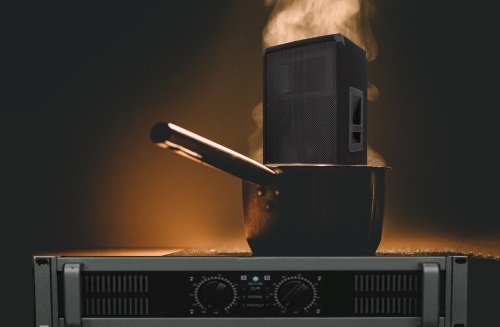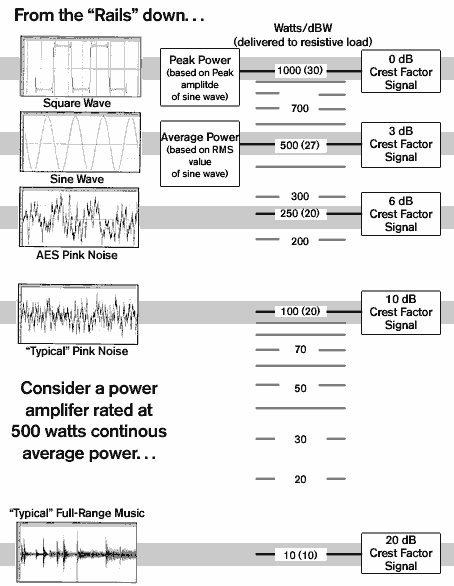
Some examples are in order…
1. Suppose that you have a loudspeaker rated at 100 watts continuous and you wish to select an amplifier to use with it. The program material will be heavily com pressed music (6 dB crest factor). This means that you need 6 dB of headroom above the continuous output power of the amplifier.
An amplifier rated at 200 watts continuous (+23 dBW) can output 3 dB more on peaks (+26 dBW). Subtracting our crest factor (6 dB) leaves +20 dBW (100 watts). So, a 200-watt amplifier should be able to provide 100 watts continuous with 6 dB left for peaks.
2. Suppose you have an amplifier rated at 120 watts continuous. How much clean continuous power can it deliver to a loudspeaker when fed with a 20 dB crest factor signal?
Converting the amplifier rating into a level, we have 20.8 dBW. We can add 3 dB since the amplifier was rated using a sine wave (+23.8 dBW). Subtracting the crest factor of the signal (23.8 – 20) leaves 3.8 dBW. Converting back to watts we have 2.4 watts.
In conclusion, while there are several possible approaches to the problem, the most straightforward is to work down from the peak output wattage of the amplifier using the crest factor of the signal.
Of course, it’s always advisable to use a larger amplifier than actually required, as long as the continuous power rating of the loudspeaker is not exceeded.

Pat & Brenda Brown lead SynAudCon, conducting audio seminars and workshops online and around the world. For more information go to www.synaudcon.com.
